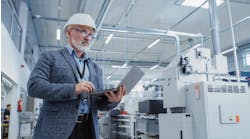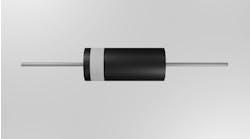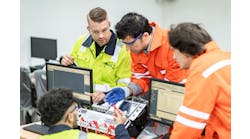My good friend and colleague, Mr. Dick Morley, died just over a year and a half ago and has left a legacy beyond comprehension to most.
He is the father of the PLC and has various patents including anti-lock brakes and the floppy disk. He was a visionary with a sharp tongue and a colorful writing style. He once said, while writing for a Canadian magazine that I was also writing for, that he had to write in Canadian, so that Canadians would understand what it was he was trying to say.
I’m not sure about that, since Canadians can speak U.S. quite nicely.
In 1999, he and Patricia Moody wrote a book called, “The Technology Machine—How Manufacturing Will Work in the Year 2020.” And, well, here we are. So I thought I would take a trip though the book and see how visionary he really might have been.
It seems that he was. He spoke of autonomous agents in 2020. The example he used was a Boston cabbie who runs his own show without any central dispatch as such. While the methodology isn’t really spelled out, it begs the resemblance to services like Uber and Lyft.
He suggests that the workforce would be empowered and self-managed, comparing it to a police scanner—always on and always processing. It is about mobilizing the workforce to be agile in order to respond to changing market conditions.
[pullquote]The Internet surely aided this agility.
The organizations of 2020 will resemble a printed circuit board, he states. Manufacturing needs to provide the methodology to create good circuits—connectivity and touch points in the process, which includes the extended enterprise. Globalization and access to data everywhere comes to mind here.
Human development has become very important in our business and manufacturing world. Morley suggested that rewarding people with money will be limiting their flexibility and growth. Piece counts and productivity metrics will be complemented with skills acquisition and such things as cross-enterprise communications. Loyalty will be a measured component.
We see this even in the retail space with loyalty cards. Technology-driven knowledge will be highly desirable creating the knowledge worker. Seems we are there.
Jim Pinto, in his book “Pinto’s Points” agrees with this hypothesis. Written in the previous century, Pinto suggests that capacity and production are or will become outdated terms.
For a knowledge worker, ideas become currency. Every company is always striving for the new thing, the new technology that manufacturing will drive. Sure, it’s always about the company bottom line, but to get there they have had to following Morley’s playbook as such.
Instead of getting paid for what people are doing, it is suggested that you will get paid for what you think. It gives intellectual property a new face.
Morley states that the shift from sequential design to prototyping to production will be disruptive, which will be driven by technology—3D printing from a 3D cad program, and then to a CNC machine suggests that he nailed that.
In the book he lists a collection of wildcards—a sort of list of Nostradamus predictions. Regardless his list had some good hits, along with some misses.
- Number 1 (HIT): Technology will change our natural boundaries and communication patterns. Who would have thought a swipe right would have a meaning?
- Number 4 (MISS): He predicted that the big insular companies, such as GM, would be a casualty. While Tesla is trying, GM is adapting. He also suggests that Microsoft could be next due to inflexible technology.
- Number 10 (HIT): Intellectual property will become very important, and as such IP law and lawyers become a thing.
- Number 14 (HIT): The return of lifetime employment may be argued, but due to the intellectual capital that is invested by companies and employees will become valued and loyalty is rewarded.
- Number 19 (HIT): 3D printing using molten steel; he calls it ink-jet steel.
- Number 24 (MISS): Satellite manufacturing will be carried out onboard thousands of small satellites.
- Number 31 (HIT): Well, sort of. TV will be dead, and the streaming of customized entertainment will be the product of choice. He was close.
- Number 34 (MISS): Again, sort of. Software will be dead; embedded intelligence rules.
- Number 39 (HIT): Smart everything, read Internet of Things (IoT).
- Number 45 (HIT): Drugs for every possible condition and situation. Pharma rules the world.
- Number 66 (HIT): Bandwidth demand will explode. Data everywhere, anytime.
- Number 67 (HIT): Diabetics will use a scanner to check their blood sugar levels. Intelligent sensors abound.
- Number 89 (HIT): We are approaching this: nanobots will help with internal medicine and diagnosis.
- Number 120 (HIT): driverless cars. We are here now.
All in all, technology and manufacturing either makes or breaks all things that we know as of right now. It is because of bright and inquisitive minds like Dick Morley’s that we have been led here.
Who will be the leaders in thought in this the new decade? It could be you.






